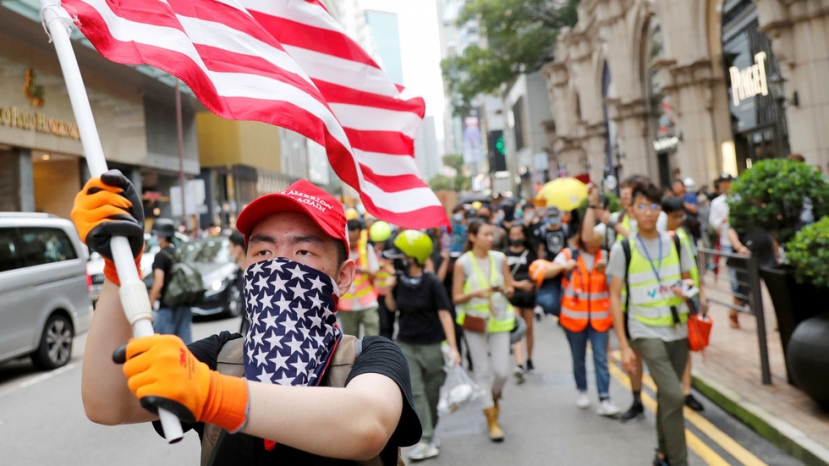YouTube axes anti-protest channels as US Ministry of Truth battles China over Hong Kong
23.08.2019 05:45
 YouTube axes anti-protest channels as US Ministry of Truth battles China over Hong Kong
YouTube axes anti-protest channels as US Ministry of Truth battles China over Hong Kong
“Channels in this network behaved in a coordinated manner while uploading videos related to the ongoing protests in Hong Kong,” Google threat analyst Shane Huntley claimed in a blog post on Thursday, adding that the Google team’s “discovery” was “consistent with recent observations and actions related to China announced by Facebook and Twitter.”
Translation? The channels were “sowing political discord” on behalf of the Chinese government, and had to be stopped. How did Google know it was the Chinese nefariously attempting to poison the minds against the protesters? The “use of VPNs” and “other methods of disguise” – widespread in the era of mass surveillance – was all the proof required to wipe the channels out of existence.
Twitter got the anti-China censorship ball rolling earlier this week, in perhaps the first-ever social media preemptive strike “proactively” deplatforming hundreds of thousands of accounts for the capital crime of “sowing discord.” Their crimes included “undermining the legitimacy and political positions of the protest movement on the ground.” One could argue that the protests themselves are a form of political discord, but resistance is futile when charged with such an inchoate offense.
None of the social media platforms have ever defined what exactly constitutes “attempting to sow discord,” though a common thread running through the mass deplatformings of the past year suggests it involves posting in support of a government the US doesn’t like – whether Russia, Iran, Venezuela, or China.
The social media Ministry of Truth has become increasingly open about the irrelevance of truth in what constitutes actionable disinformation. One group of “experts” in the spread of disinfo online even published a paper this week explaining that true statements could constitute disinformation if they were arranged to serve a purpose, calling for platforms to expand their definition of “inauthentic behavior” to include anyone reposting information portraying the “good guys” in a negative light.
The Chinese government challenged Twitter to explain its decision to ban state-owned media from advertising, asking “Why is it that China’s official media’s presentation is surely negative or wrong?”
Beijing has pointed to a US role in fanning the flames of unrest, a charge that grows more plausible with every day the protests continue despite having succeeded in forcing the Hong Kong government to withdraw a bill that would have allowed criminal suspects to be extradited to China. Armies of pro-protest tweeters swarm any post by Secretary of State Mike Pompeo with pleas to intervene in their plight, even as US lawmakers threaten to rain down fire and fury should anyone harm a hair on a protester’s head. And photos of the protest leaders meeting with US diplomats suggest there is certainly some “coordinated inauthentic behavior” at play on the other side.
YouTube, as a subsidiary of Google, has been exposed as even more partisan than Twitter’s arbiters of truth. A whistleblower released nearly 1,000 pages of internal documentation earlier this month showing YouTube’s algorithms were aimed more at shaping reality than at accurately portraying it. The platform removed Iranian state media channels as Washington ramped up tensions with Tehran in the Strait of Hormuz, and its deactivation of pro-China channels now suggests the protests - despite achieving their initially stated goal – are far from over.
